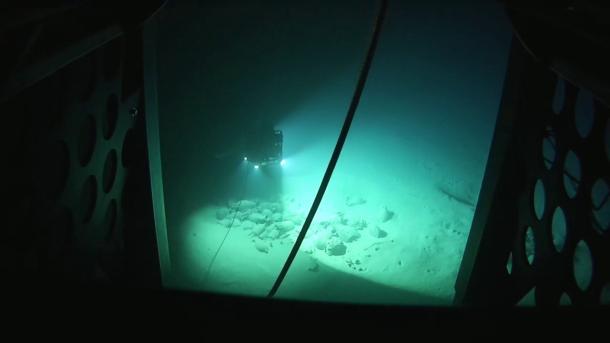Press release
Successful archaeological mission for UNESCO and 8 Member States in the Mediterranean

This mission is the result of unprecedented international cooperation. I thank the eight Mediterranean Member States that worked together to organize and conduct scientific research, under the coordination of UNESCO, based on our 2001 Convention on the Protection of the Underwater Cultural Heritage.

Researchers from Algeria, Croatia, Egypt, France, Italy, Morocco, Spain and Tunisia collaborated for this mission. It took place over 14 days, aboard the French scientific vessel, The Alfred Merlin, in international waters, on the Italian continental shelf, under the coordination of Italy, and then on the Tunisian continental shelf under the coordination of Tunisia.
It concludes with signifiant advances, in particular, high resolution documentation of shipwrecks from the Roman period to the 19th century. This confirms that the Skerki Bank is of the greatest interest for the underwater cultural heritage in the world.

High resolution mapping for the first time
The archaeologists led a survey using two different robots, or, Remotely Operated Vehicles, adapting to the geographical and morphological submerged areas. The robot Arthur, designed especially for archaeological surveys in deep waters, was used to document shipwrecks on the Italian continental shelf.
Arthur documented 3 roman shipwrecks discovered by the American expeditions (Ballard-McCann) in the 1990s. Archaeologists were happy to find that the state of conservation of these shipwrecks and artefacts is almost the same as it was nearly 30 years ago; they have not been impacted by sedimentation, bioerosion or human activities (fishing nets, etc.).
The new data collected allows for higher resolution photos and videos that help to characterize and date the ships’ cargo. Documenting these sites, has uncovered substantial new evidence.
3 new shipwrecks documented
On the Tunisian continental shelf, the archaeologists used the robot Hilarion to verify and document the targets of the newly mapped area. The seabed was also explored with multibeam sonar to give more information about this area, which is unknown and dangerous for navigation, and on the potential location of other archaeological remains.
The area around the Keith Reef was scanned for the first time in order to produce a detailed map showing the traces of underwater cultural heritage. This allowed the scientific and technical team to document 3 new shipwrecks dating from the Ancient to the Modern period (C19th), as well as several other areas of archaeological interest.
What’s next?
This Autumn, the archaeologists will meet at UNESCO to unveil their preliminary findings. A full, detailed report will be presented at a later date. This is the first step in a lasting relationship of multilateral cooperation in the Mediterranean.
The archaeologists plan to process the photogrammetry of the revisited wrecks located on the Italian continental shelf, using the video taken by the robots and recommend continuing the mapping of the Skerki Bank area on the Tunisian continental shelf. They also want to organize several activities such as a scientific conference, follow-up missions and a reflection on the protection of these sites.
This multilateral mission is both an opportunity and an example to be shared with other countries as a best practice for the study, protection and promotion of underwater cultural heritage in international waters.
Press kit
Photos, videos and further information about the mission is available on this page.
This press page will continue to be updated after the end of the mission.
Press contact

Phone: +33145681729
More about the mission
A Ship Graveyard
The Skerki Bank is situated in the Strait of Sicily / Canal du Cap-Bon along one of the busiest maritime routes in the Mediterranean, however it’s also one of the most perilous. The shallow waters and rocky seabed hiding in places less than a meter beneath the surface have been the cause of shipwrecks for thousands of years, from antique trading vessels to World War II ships. Over the past decades some of these shipwrecks have been looted by amateur divers, jeopardizing this precious historical resource.
Archeological Mission
The Alfred Merlin, provided by France, is a state-of-the-art archaeological research vessel, equipped with underwater mapping and imaging technology. The exploration of the shipwrecks themselves are conducted by two Remotely Operated Underwater Vehicles (ROVs), deep-sea robots able to reach areas previously inaccessible to divers. Onboard the ship are more than 20 scientists, researchers, and representatives from each of the 8 Member States as well as a specialist from UNESCO.
Key Figures
- 8 countries
- 14 days mission
- 20 archaeologists
- Arthur Robot: 21h09 underwater (depths of 700-900m)
- Hilarion Robot: 18h11 underwater
- 400 hours of video
- over 20 000 photos
- 10 km2 surface covered by multibeam on the Skerki Bank, the multibeam offered a high definition survey with a line every 25 meters in an area of 2 km2.









